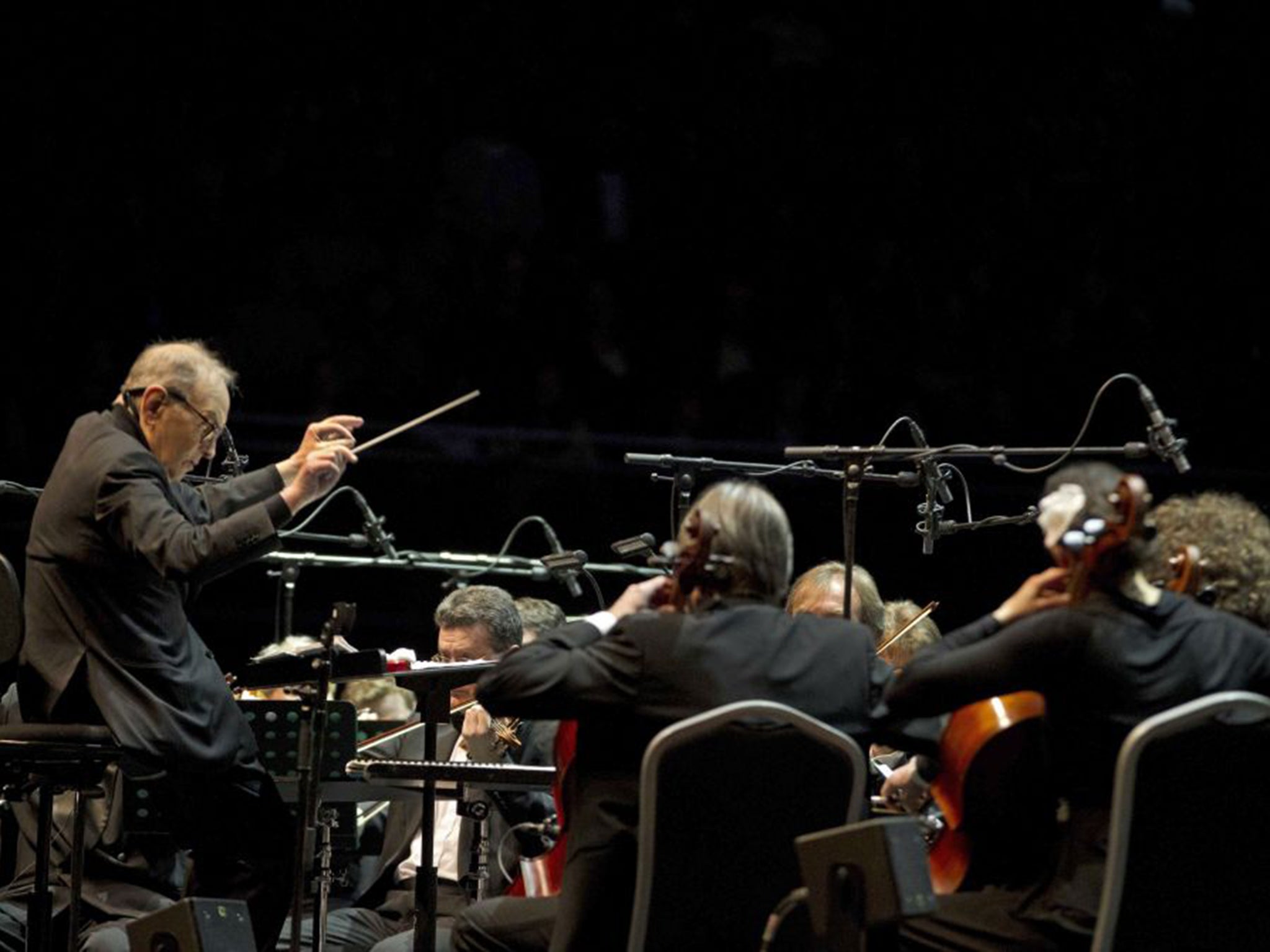Ennio Morricone review: Veteran soundtrack composer squeezes every last drop of spaghetti western magic for The Ecstasy of Gold
The 02, London

Wooden crosses rush by, gravestones swirl, an outlaw’s eyes widen, grass blurs, dirt flies - that breathless final scene of The Good, The Bad & The Ugly as Tuco runs around a cemetery in search of buried treasure may not be playing on the screens beside the stage at the O2, but those images from Sergio Leone’s masterpiece are surely in the minds of everyone in the audience, as the arms of Ennio Morricone beseech the full orchestra before him to yield every last drop of spaghetti western magic from his tour de force, The Ecstasy of Gold.
Leone left us long ago but the director’s favourite soundtrack composer, Morricone, is still full of vigour even at 86 years old. And while his music would surely sound just as evocative coming from the players of the Czech National Symphony Orchestra (there’s one member for every year of his age) no matter who was waving the baton, there’s something special about seeing the creator up there himself, at the focal point of energy and sound.
Morricone strides off and on stage to collect soprano Susanna Rigacci for her cameo like a man decades younger, and merely half sits on the chair behind him during the two hours and more of our concert. All this despite a back injury that led him to cancel a tour last spring, news that led some fans to fear they might never see him conduct again.
His scores have been woven into the minds of cinema-goers through the epic movies he has worked upon, but does the music stand up alone? Yes - emphatically yes. It could barely matter less if you’ve never seen ‘Burn!’ or ‘Investigation of a Citizen Beyond Suspicion’, as the instrumentalists - and the accompanying 76-strong Kodály Choir - present his extraordinary range of compositions. First the elegaic harp comes to the fore in ‘The Legend of 1900’, then the contemplative piano of ‘Cinema Paradiso’, then the military drumming for ‘The Battle of Algiers’.
Listening to his music in concert and away from the movies, what also hits home afresh is how unconventional many of his works are. Hugo Montenegro’s recording of Morricone’s theme for The Good, The Bad & The Ugly surely remains the most unlikely single to ever reach number one in the UK charts - but even shorn of some of its more esoteric sounds here (there are no gruff male exhortations to be heard in the background), that most famous of movie tunes still sounds just as original today.
The only disappointment of the night comes from the setting. The O2 Arena is the other side of London from the more suitable Royal Albert Hall, but soullessness of its atmosphere on a night like this makes the two venues feel a whole world away. The screens sometimes feel feel intrusive too, as an onstage cameraman wanders around the fringes, looking like he’ll stumble into the trumpet players at any moment.
But then for a man of Morricone’s stature, performing a “My Life in Music” retrospective of his favourite scores from his 400-plus film credits, perhaps it’s only fair that so many thousands get the chance to see the maestro as his career moves towards its finale. As he shows by coming back onstage for a second and even speedier rendition of The Ecstasy of Gold for an encore, he does like to please his crowd.
Subscribe to Independent Premium to bookmark this article
Want to bookmark your favourite articles and stories to read or reference later? Start your Independent Premium subscription today.

Join our commenting forum
Join thought-provoking conversations, follow other Independent readers and see their replies